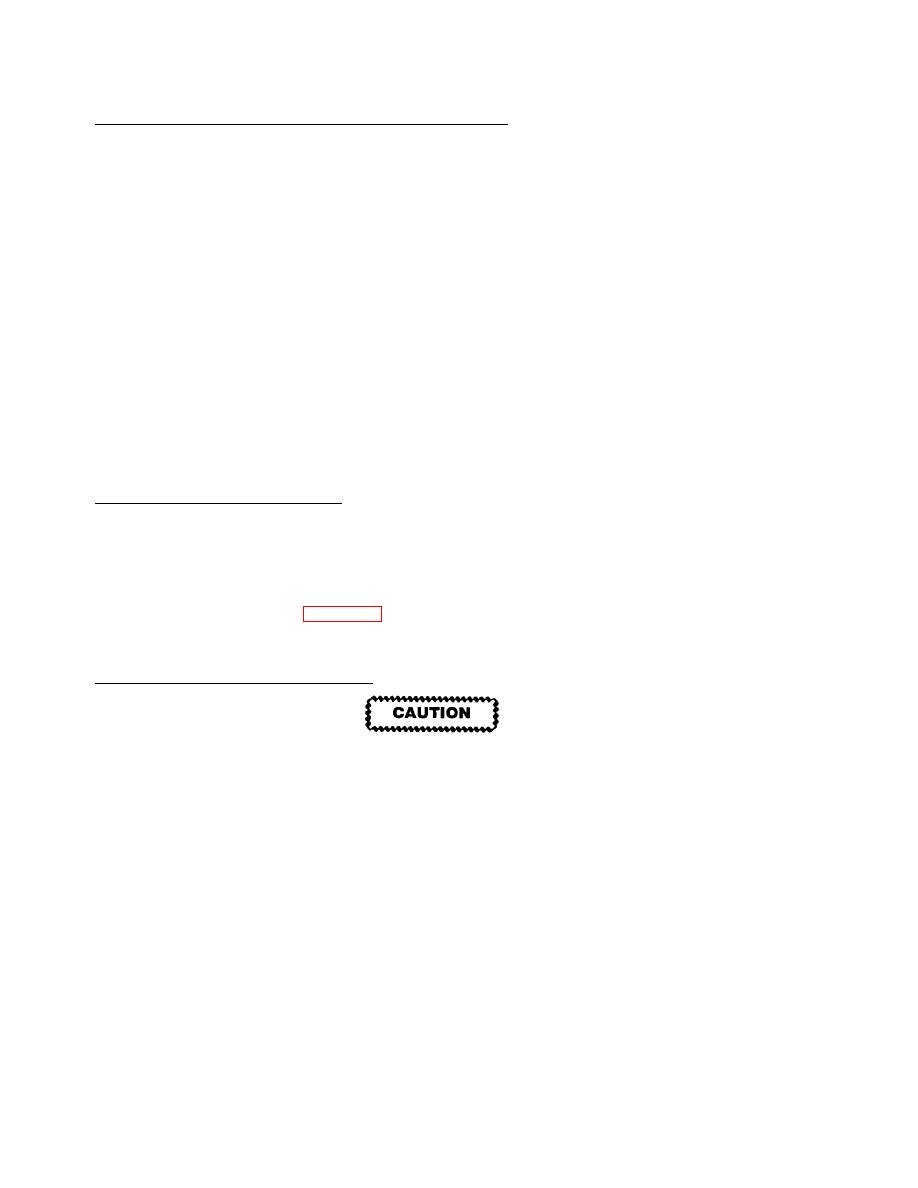
TM 10-5410-228-10
F.4
SEQUENCE OF OPERATIONAL DECON PROCEDURES.
If the tent surfaces are heavily contaminated, the crew can wear the Suit, Contamination-Avoidance, Liquid-
Protective (SCALP), to minimize contamination of MOPP gear when striking and preparing the
contaminated shelter in NBC mode for movement to a new site. Using the SCALP prevents the over-
garment and overboots from being exposed to liquid agent and preserves them for continued use.
a. Apply Detector Paper - To indicate whether decon may be necessary, place M9 detector paper in five
locations on the CBPS when it is to be transported: 1) the front bumper, 2) the top of the LMS, 3) on
a horizontal exterior surface of the TALP that would be exposed to falling agent, and 4) low on each
side of the HMMWV frame.
b. Detection - Before beginning to strike the CBPS, examine the M9 paper for indication of
contamination. Use M8 paper to confirm any positive M9 paper indications and to check any visible
moisture apparent on other surfaces.
c.
Operational Decon - If detector paper indicates contamination is present, use decon solution to
neutralize those areas. Apply decon solution to all areas that are covered with ABS material; under
window flaps, Ambulatory Airlock (AA) & Tunnel Airlock Litter Patient (TALP) airlocks, Fastex
buckles (used as fasteners on the travel cover and door flaps), dump caps, pass-through ports, DCS
connector, etc.
d. Initial Entry To Inflate - Follow instructions defined in the TM.
F.5
THOROUGH DECON ABSTRACT.
Thorough decon of the CBPS can be performed only with the support of a chemical battalion using either
mobile M12 Power-Driven Decon Apparatus (PDDA) or mobile M17 Lightweight Decontamination System
(LDS), and equipment for applying decon solution(s) and chemical agent monitoring (CAM). The FM 3-11.5
detailed equipment decontamination line for mobile vehicles involves a process of moving through five
stations; primary wash, decon solution application, contact time, rinse, and chemical monitoring. CBPS
should be treated as a fixed site (see figure F-1) once it has reached designated thorough decon site. The
fixed site decon procedures in FM 3-11.5 are vague, therefore the following procedure is recommended.
Only bleach based decontaminates should be used on the CBPS.
F.6
THOROUGH DECON PRECAUTIONS.
Do not apply decontaminants to bare metal surfaces, such as hydraulic lines, motors, and
unpainted portions of the POD/ECU interior.
Do not spray decontaminant or rinse water into air intakes and filter system.
If using, avoid applying DS2 directly to tent zippers or to hook-and-pile fastener tape and
airlock vents.
Avoid applying decon DS2 to the pressure relief valves on each side of the LMS shelter, to
buckles of the tent, or to air beam dump caps.
Avoid direct contact to ABS surfaces with high pressure decon apparatus. Use a `fan' tip to
reduce the risk of ABS material failure from extreme pressures.
It is safe to apply all decontaminates to the air beam shelter (ABS) tent fabric, window
material, and CBPS chemical-agent-resistant coating (CARC) painted surfaces.
Do not allow decon solution or any liquids to enter the dump caps while removing dump caps
and rolling the tent at any stage in the decontamination process.
F-2


